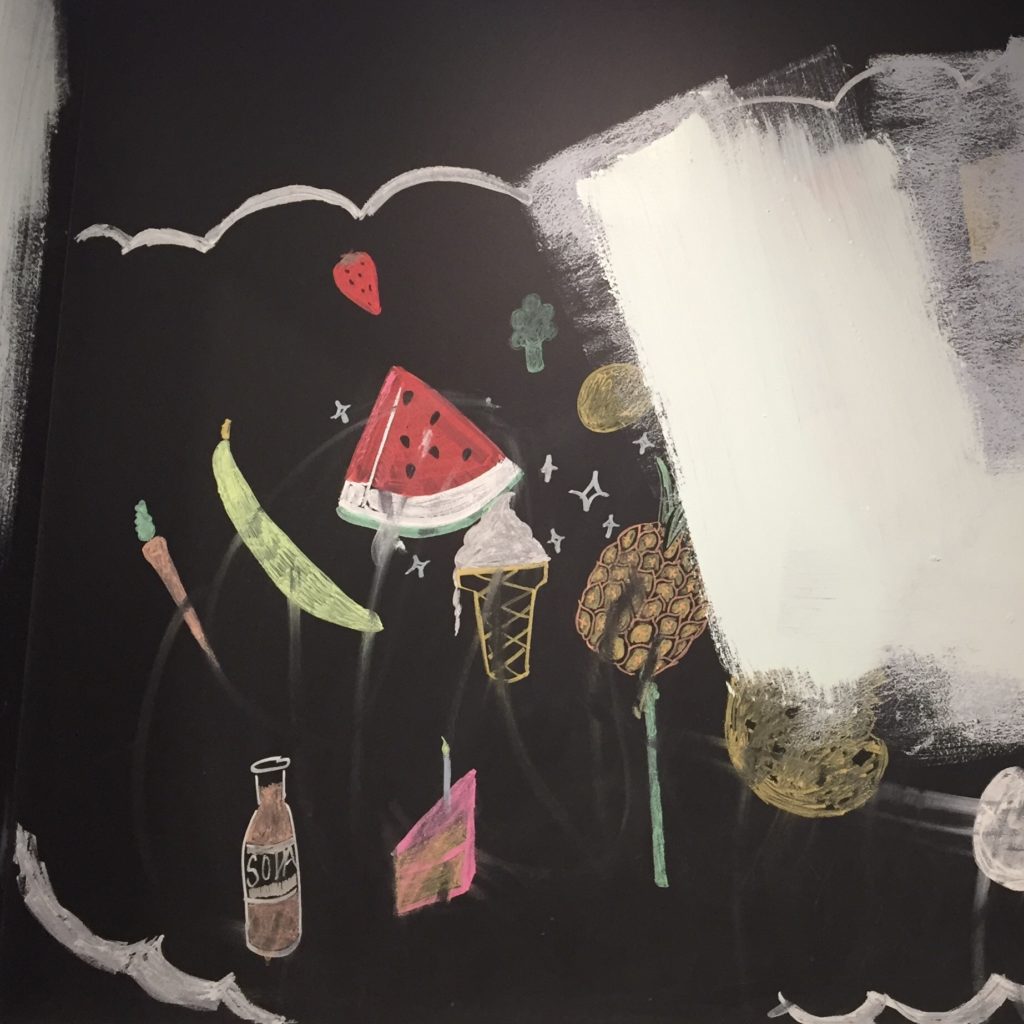
Zero-gravity space picnic at a diner in Tucson. A single example of a wide range of foods, some sharpened, some severely angular, all edging away from an approaching wall of whiteness. (Photo by H. Ensor)
The Hand-Painted Food Signs Archive
Food paintings from all over

Zero-gravity space picnic at a diner in Tucson. A single example of a wide range of foods, some sharpened, some severely angular, all edging away from an approaching wall of whiteness. (Photo by H. Ensor)
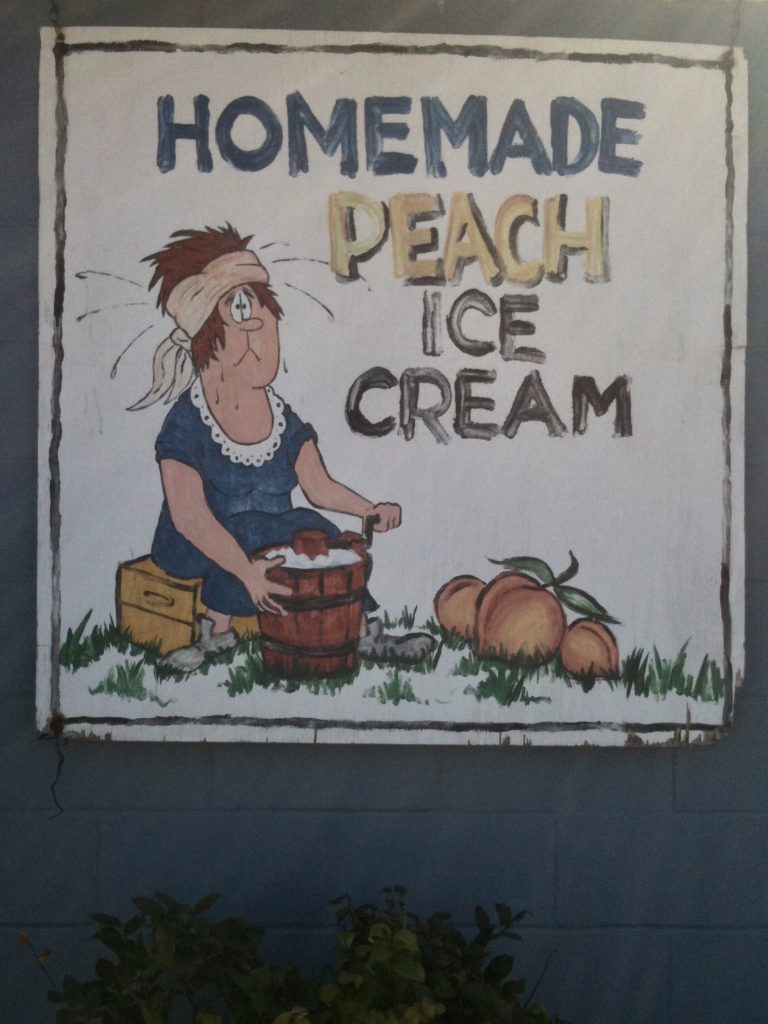 This painting is not about the giant peaches they put in the ice cream but more about the effort it takes this laborer to make it. It looks pretty hard. “We put blood, sweat and tears into our product. Mostly sweat.”
This painting is not about the giant peaches they put in the ice cream but more about the effort it takes this laborer to make it. It looks pretty hard. “We put blood, sweat and tears into our product. Mostly sweat.”
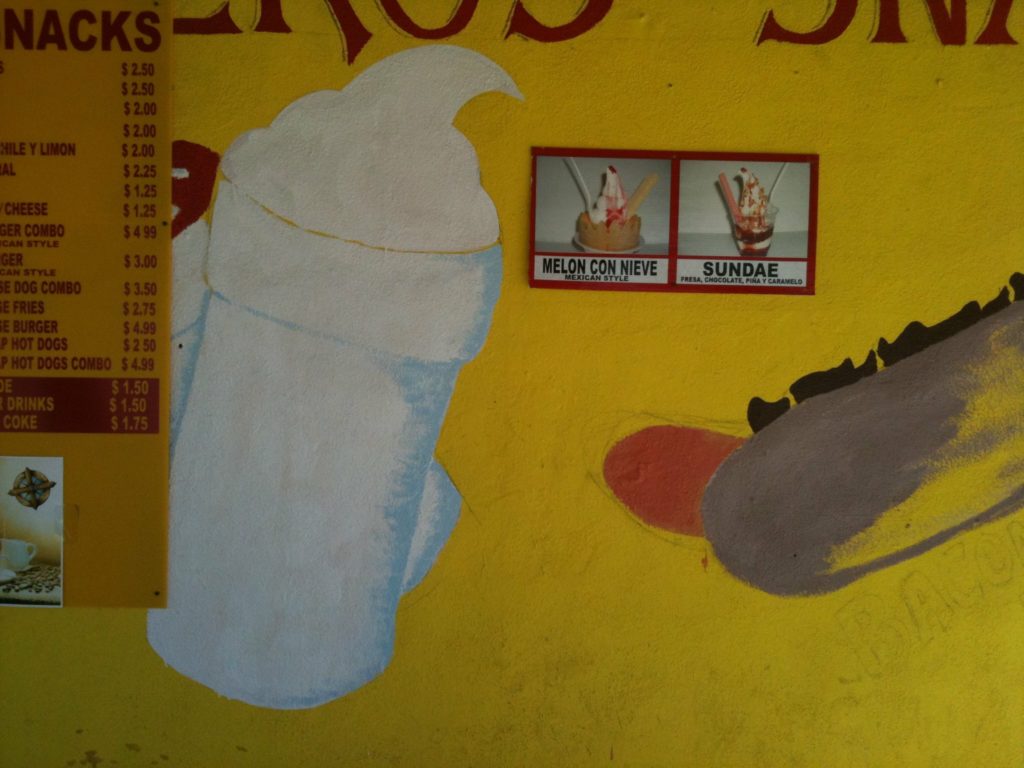
The prelimary drawing gives a touching view into the process that made this suggestive arrangement possible. I especially love that they decided not to fill in the “bacon” caption under the hotdog.
 Hot dog taking a nap on an old sofa. They got this sucker behind safety glass.
Hot dog taking a nap on an old sofa. They got this sucker behind safety glass.
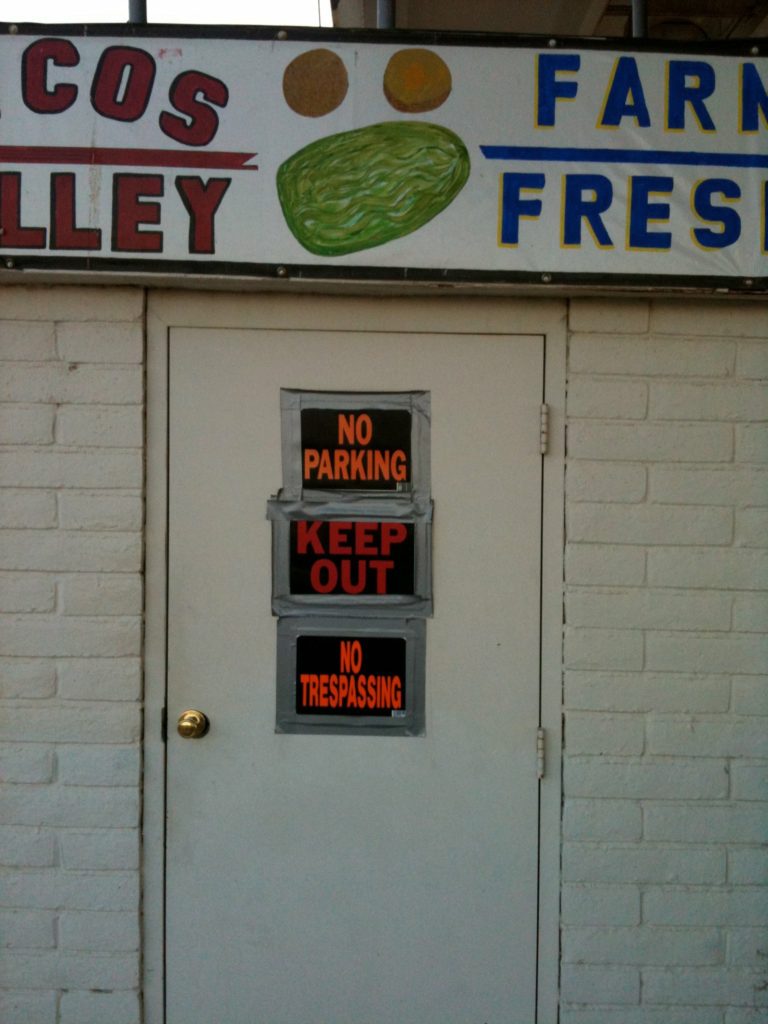
You can buy a melon, and then get the HELL out of here.
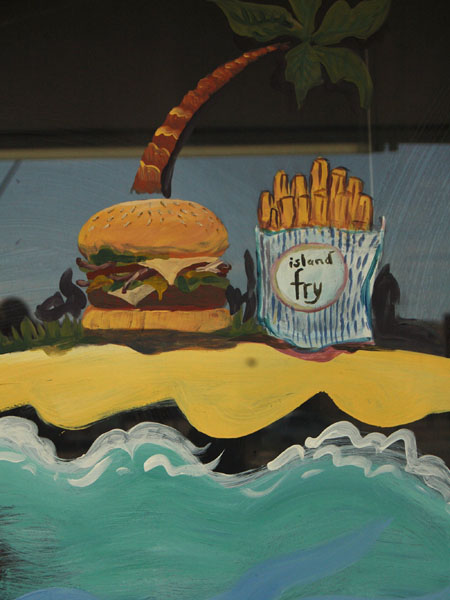
A burger and fries vacationing on a tropical island. The water and beach are sketchy, but the burger, especially the bun, is strangely lifelike, even shadows on each sesame seed.
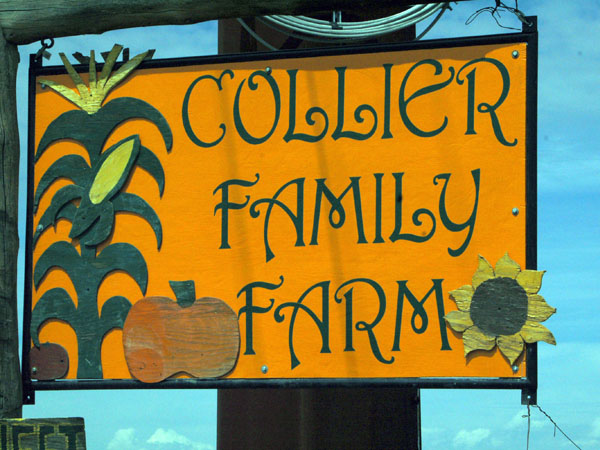
One might make the claim that hand-painted food signs say something about the culture in which and for whom they exist. This sign doesn’t mean any harm. Nor does it want to spark any passions, cause a fuss, or risk being seen as interesting in any way. Cut-out shape signs are kind of like that.
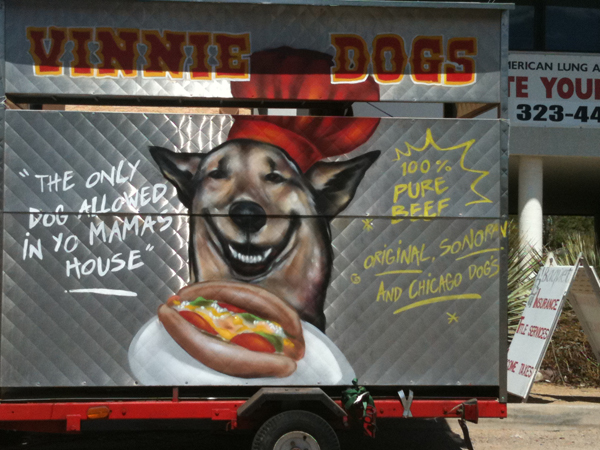
It is as though Vinnie asked the sign painter to make a dog chef serving a hot dog, imagining a cartoon dog in a chef’s hat. But the result is a bizarrely realistic painting of a German Shepherd delivering the food, which is not whimsical but nightmarish in feeling. Still, a great shadow under the Sonoran dog.
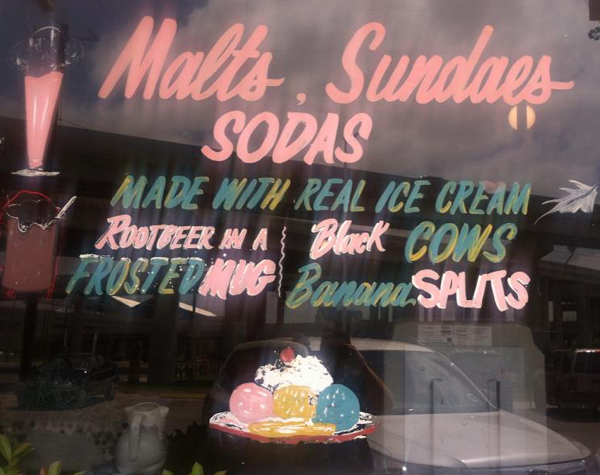
My favorite part of this is all the wonderful text, italicized, some whimsical details. The ice cream image (competently rendered) takes a back seat here. And there’s the fugitive leaf. (photo by L. Davenport)
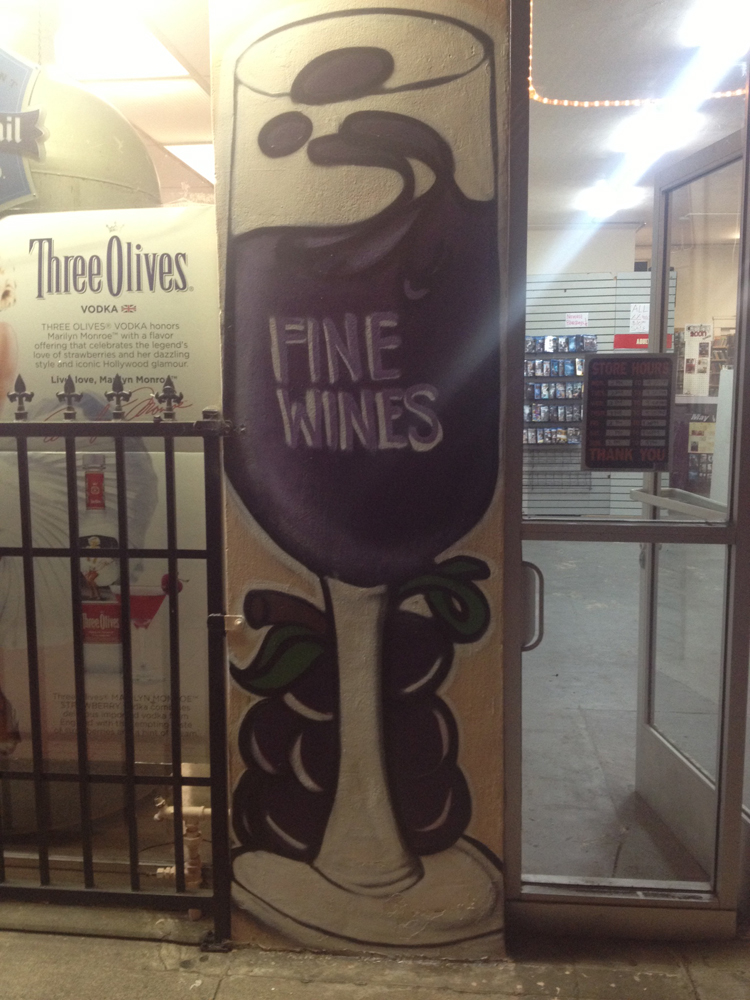
This definitely goes in the “splashy” category, though slow-motion lava lamp style splashiness. (photo by J. Friedman)
The left panel of this grand butcher shop diptych (one could be forgiven for calling it an altarpiece) is less tense in feeling. A customer gives the side-eye to the flacid two and a half pound chicken corpse, which she’s thinking will go nicely with several dozen eggs and a slice of peach-colored loaf. Judging by the lovely Modern era ceiling fan, the well-observed decorative butcher paper dispenser, the out-on-the-town cap and scarf, this painting must date from the golden age of Pecos butchery (assuming there was such an age). The eggs remind me of this painting by Sir Cedric morris.
In this painting, no effort is put into playing down the psycho-killer associations we have with butchers. The searing but vacant stare of the butcher, the purposeful arrangement of ‘sharps’ and prominent over-head cleaver and hacksaw. Do butchers really store they cleavers above their heads with binder clips? They even went to the trouble of painting the two separate colored electrical wires that hold the bare bulb to the ceiling. I imagine the bulb flickering as we realize that’s not a pencil in his pocket, but a finger.
This is less a portrait of food as it is a portrait of the tools of the butcher. A trade painting. Along the lines of this painting from the 13th century (oh, maybe they do store knives above their heads).
Such incredible detail in this painting. The realism extends to the delicate blue and white patterns on the china. The burrito and quesadilla could be munched upon by a Philip Guston figure. This is part of an extraordinary triptych.
Exceedingly drippy. I’m adding a new category called Fanciful. These pies are meant to be diagrammatic, representing the different sizes, but with all that cheese, and the implied narrative of the missing piece, they go beyond pure schema.
(photo by J. Gordon)
Harsh and stiff lines, using a straight edge for everything but the splash. Decidedly uncelebratory in feeling.
(1st Ave.)
As American as this Protestant pie. If you want your food painted at lecherous angles or in cavalier colors, you may like to dine someplace else. Like Babylon.
More from the same place, same strange shadow choice. it’s like a shadow, but it doesn’t act like a shadow. Sorry about the glare, the rapture was just starting.
These appear to be cut-outs (which is a whole category of food signs) but they are not. I wonder why the painter decided on that shadow; it represents light acting upon a form, but not the form that’s being represented. Angle, angle, angle. This place was covered in food paintings.
Cocktails are under-represented. The occasional martini glass, but wine drinkers seem to keep their imagery mechanically-derived, maybe a social class distinction. It is a fact that the wealthier a neighborhood, the fewer hand-painted food signs. Yet, more art galleries. Funny.
A lot of bravado for a rather bland and risk-averse painting of a cheeseburger. And you’re missing an apostrophe.
One of the sadder food sign in the Archive. The sesame seed bun and the red fries container indicate McDonalds. I don’t think they sell food here. I think it’s strictly a sun-bleached toy packaging and foresaken strollers kind of operation.
Copyright © 2025 · Genesis Framework · WordPress · Log in